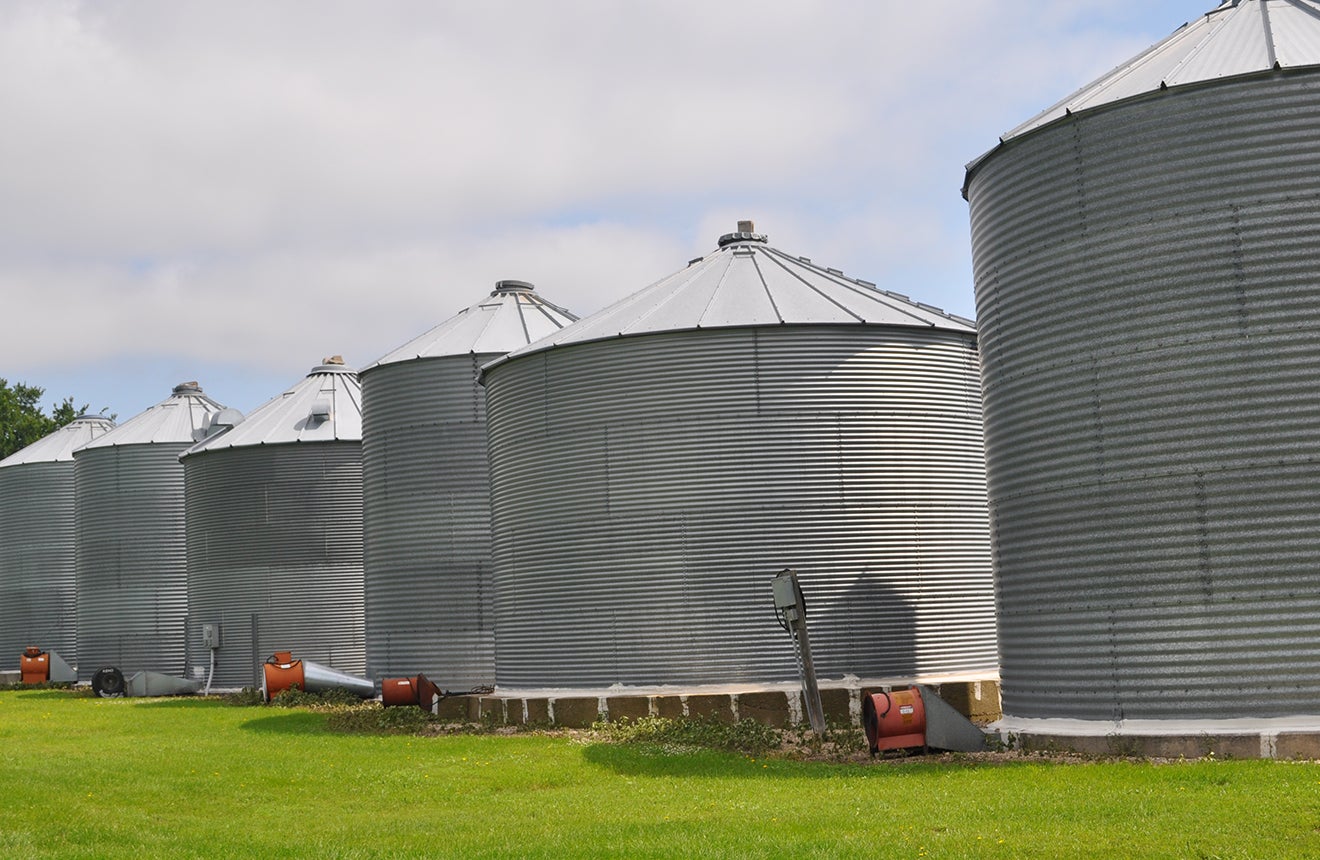
Work safely around grain bins
Make sure everyone, including family and employees, working around stored grain understands the hazards and proper safety procedures.
“Too many people ignore safety practices and suffer severe injury or death while working around grain,” says Ken Hellevang, North Dakota State University Extension agricultural engineer. Never enter a bin while unloading grain or to break up a grain bridge or chunks that may plug grain flow. Flowing grain will pull you into the grain mass, burying you within seconds. Use the “lock-out/tag-out” procedures to assure equipment will not start before entering the bin.
Bridging occurs when grain is high in moisture content, moldy or in poor condition. The kernels stick together and form a crust. A cavity will form under the crust when grain is removed from the bin. The crust isn’t strong enough to support a person’s weight, so anyone who walks on it will fall into the cavity and be buried under several feet of grain.
Determine if the grain has a crust before any grain has been removed. If work needs to be done with a crust, it must be done before any grain is removed.
To determine if the grain is bridged after unloading has started, look for a funnel shape on the surface of the grain mass. If the grain surface appears undisturbed, the grain has bridged and a cavity has formed under the surface. Stay outside the bin and use a pole or other object to break the bridge loose.
If the grain flow stops when you’re removing it from the bin, a chunk of spoiled grain probably is blocking the flow. Entering the bin to break up the blockage will expose you to being buried in grain and tangled in the auger.
If grain has formed a vertical wall, try to break it up from the top of the bin with a long pole on a rope or through a door with a long pole. A wall of grain can collapse, or avalanche, without warning, knocking you over and burying you.
Never enter a grain bin alone. Have at least two people at the bin to assist in case of problems. Use a safety harness and rope that prevents you from descending rapidly more than a couple of feet when entering a bin.
“Take time to think of all options before entering a bin,” Hellevang advises.
Grain bags are suffocation hazard
Never enter a grain bag, because it is a suffocation hazard. If unloading the bag with a pneumatic grain conveyor, the suction can “shrink wrap” a person so he or she cannot move and will limit space for breathing.
Bins require clearance from power lines
Our farmers work hard to get the job done, and sometimes it’s easy to forget all the necessary steps to take when practicing safe operations. Whether you are purchasing new grain bins or remodeling areas that contain existing ones, proximity to overhead power lines must be a considered factor.
-
Safe clearance. The National Electrical Safety Code requires an 18-foot minimum vertical clearance from the highest point of the filling port of the grain bin to nearby high-voltage wires and a 55-foot minimum distance from the power line to the grain bin wall.
-
Filling grain bins. Maintain an adequate high-wire clearance when using a portable auger, conveyor or elevator to fill your grain bin.
-
Moving equipment near grain bins. When moving equipment, such as a hopper or a scaffold, be aware of nearby power lines. Remember to maintain a 10-foot clearance to ensure safety.
Accidents can happen in a split second, which is why Cass County Electric Cooperative reminds you to always use caution when working near power lines. If you are considering a plan for a new grain bin or reconstruction of an existing bin’s site, please contact Cass County Electric and let us assist you in maintaining a safe environment for you and your family.
